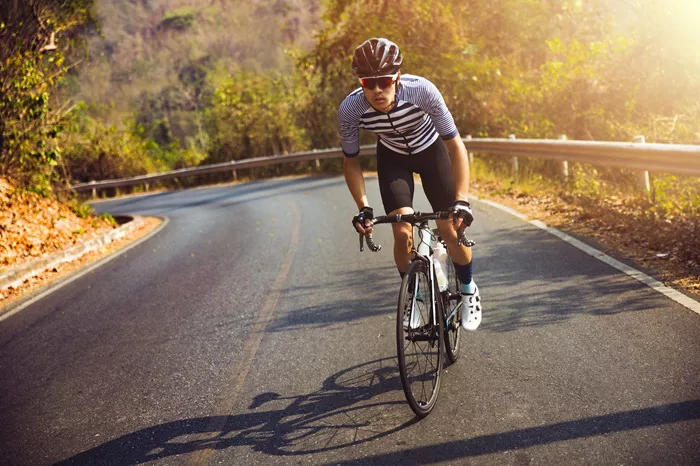Cycling is a great way to stay fit and healthy. But to be a better cyclist, you need more than just riding a bike. Strength, endurance, flexibility, and balance all play a role in cycling performance. The right exercises can help you ride faster, longer, and with less fatigue. Here are the best exercises to improve your cycling.
Strength Training for Cyclists
Cycling uses many muscles, especially in the legs. Stronger muscles mean more power on the pedals. Strength training helps prevent injuries and improves efficiency.
Squats are one of the best exercises for cyclists. They work the quads, hamstrings, and glutes. These muscles are key for pedaling. Start with bodyweight squats. Keep your back straight and lower yourself as if sitting in a chair. Go as low as you can without pain. Add weights for more challenge.
Lunges also help build leg strength. They improve balance and stability. Step forward with one leg and lower your body until both knees are bent. Push back up and switch legs. You can do walking lunges or stationary lunges.
Deadlifts strengthen the hamstrings and lower back. Good form is important to avoid injury. Keep your back straight and lift with your legs, not your back. Start with light weights and focus on technique.
Core exercises are essential for cycling. A strong core helps you maintain good posture on the bike. Planks are a simple but effective exercise. Hold your body in a straight line, resting on your forearms and toes. Try to hold for 30 seconds or longer.
Russian twists work the obliques. Sit on the floor, lean back slightly, and twist your torso side to side. You can hold a weight for extra resistance. A strong core helps you stay stable on the bike, especially during long rides.
Endurance and Cardiovascular Training
Cycling is an endurance sport. Long rides build stamina, but other cardio exercises can help too. Running is a good option. It improves heart and lung fitness. Start with short runs and gradually increase distance. Be careful with running if you have knee problems.
Swimming is another great cardio workout. It is low-impact, so it’s easy on the joints. Swimming builds endurance and strengthens the upper body. This helps with bike handling and overall fitness.
Rowing is a full-body workout. It strengthens the legs, back, and arms. Rowing machines are good for indoor training. They mimic the motion of cycling and improve endurance.
High-intensity interval training (HIIT) is useful for cyclists. It involves short bursts of intense effort followed by rest. For example, sprint for 30 seconds, then rest for 1 minute. Repeat several times. HIIT improves speed and power.
Flexibility and Mobility Exercises
Flexibility helps prevent injuries and improves comfort on the bike. Tight muscles can lead to pain and poor performance. Stretching should be part of every cyclist’s routine.
Hamstring stretches are important. Sit on the floor with one leg straight and the other bent. Reach for your toes on the straight leg. Hold for 20-30 seconds. Switch legs. Tight hamstrings can cause lower back pain while cycling.
Hip flexor stretches help with pedaling efficiency. Kneel on one knee and push your hips forward. You should feel a stretch in the front of your hip. Hold for 20-30 seconds and switch sides.
Quad stretches keep the front of the thighs flexible. Stand on one leg and pull your other foot toward your butt. Keep your knees close together. Hold for 20-30 seconds and switch legs.
Yoga is excellent for flexibility and balance. Many yoga poses stretch the muscles used in cycling. Downward dog, pigeon pose, and child’s pose are good for cyclists. Yoga also helps with breathing and relaxation.
Balance and Stability Workouts
Cycling requires good balance. Improving stability helps with bike control, especially on rough terrain. Single-leg exercises are great for balance.
Stand on one leg and hold for 30 seconds. Switch legs. For a challenge, try closing your eyes. This improves proprioception, which is your body’s sense of position.
Bosu ball exercises are useful for stability. Stand on the flat side of a Bosu ball and try to balance. You can also do squats on it. This strengthens the ankles and improves coordination.
Plyometric exercises like jump squats build explosive power. They help with sprinting and climbing. Start with small jumps and focus on landing softly. These exercises improve muscle reaction time.
Recovery and Rest
Exercise is important, but rest is just as crucial. Muscles need time to recover and grow stronger. Overtraining can lead to injuries and fatigue.
Stretching after workouts helps with recovery. Foam rolling loosens tight muscles. Roll slowly over sore areas, especially the quads, hamstrings, and calves.
Sleep is vital for recovery. Aim for 7-9 hours per night. Sleep helps the body repair muscles and restore energy.
Active recovery, like easy cycling or walking, keeps blood flowing without straining muscles. This helps remove lactic acid and reduces soreness.
Nutrition for Cyclists
Exercise alone is not enough. Proper nutrition fuels your rides and recovery. Carbohydrates provide energy for cycling. Eat whole grains, fruits, and vegetables.
Protein helps repair muscles. Include lean meats, fish, eggs, or plant-based proteins in your diet. Healthy fats, like nuts and avocados, support long-term energy.
Hydration is key. Drink water before, during, and after rides. For long rides, sports drinks can replace lost electrolytes.
Conclusion
Cycling is a full-body activity. To ride better, include strength training, endurance workouts, flexibility exercises, and balance drills in your routine. Rest and nutrition are just as important as exercise. A well-rounded fitness plan will make you a stronger, faster, and more efficient cyclist. Start with simple exercises and gradually increase intensity. Consistency is the key to improvement. Happy cycling!
Related topics:

